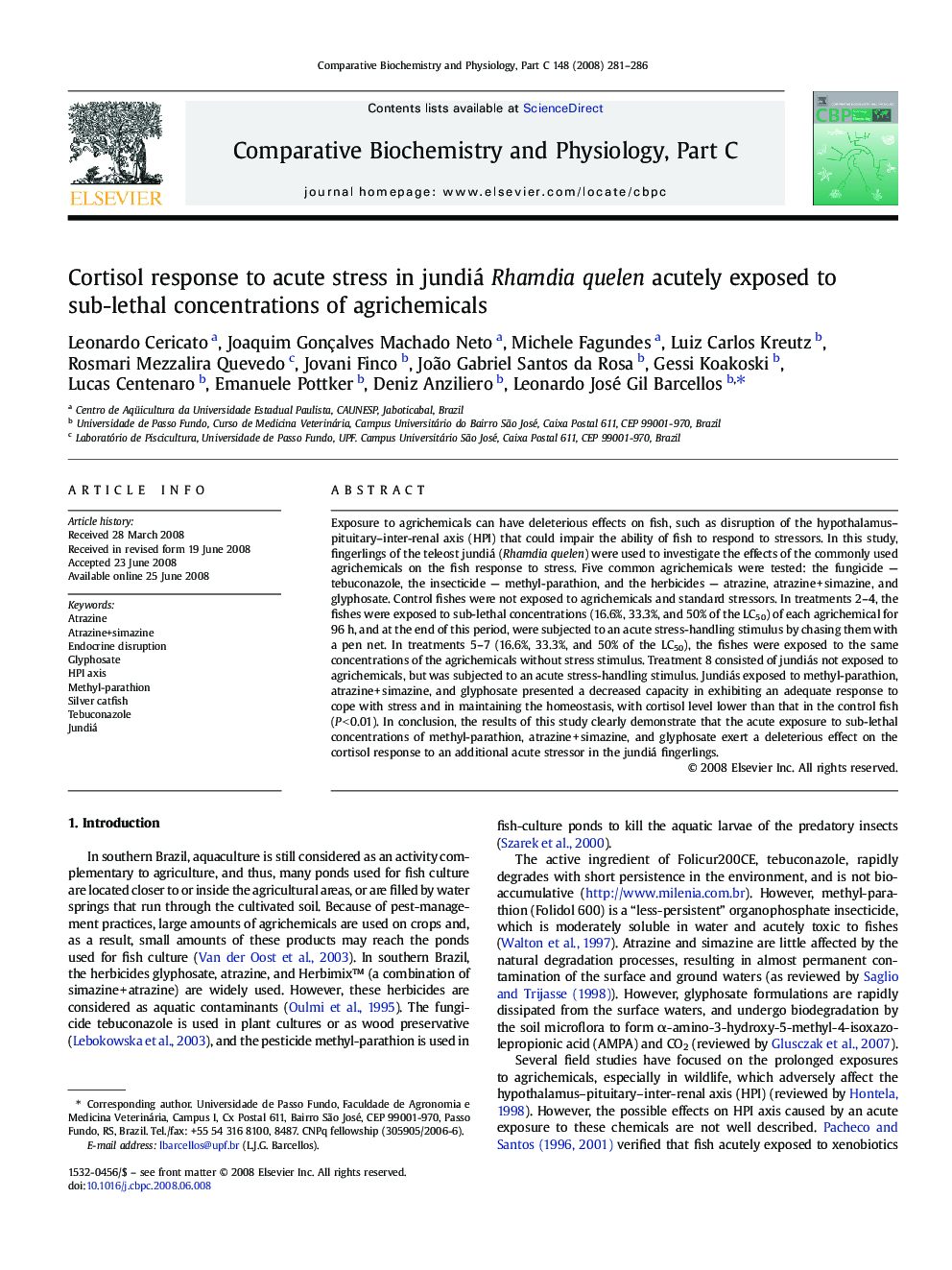| Article ID | Journal | Published Year | Pages | File Type |
|---|---|---|---|---|
| 1978385 | Comparative Biochemistry and Physiology Part C: Toxicology & Pharmacology | 2008 | 6 Pages |
Abstract
Exposure to agrichemicals can have deleterious effects on fish, such as disruption of the hypothalamus-pituitary-inter-renal axis (HPI) that could impair the ability of fish to respond to stressors. In this study, fingerlings of the teleost jundiá (Rhamdia quelen) were used to investigate the effects of the commonly used agrichemicals on the fish response to stress. Five common agrichemicals were tested: the fungicide - tebuconazole, the insecticide - methyl-parathion, and the herbicides - atrazine, atrazine + simazine, and glyphosate. Control fishes were not exposed to agrichemicals and standard stressors. In treatments 2-4, the fishes were exposed to sub-lethal concentrations (16.6%, 33.3%, and 50% of the LC50) of each agrichemical for 96 h, and at the end of this period, were subjected to an acute stress-handling stimulus by chasing them with a pen net. In treatments 5-7 (16.6%, 33.3%, and 50% of the LC50), the fishes were exposed to the same concentrations of the agrichemicals without stress stimulus. Treatment 8 consisted of jundiás not exposed to agrichemicals, but was subjected to an acute stress-handling stimulus. Jundiás exposed to methyl-parathion, atrazine + simazine, and glyphosate presented a decreased capacity in exhibiting an adequate response to cope with stress and in maintaining the homeostasis, with cortisol level lower than that in the control fish (P < 0.01). In conclusion, the results of this study clearly demonstrate that the acute exposure to sub-lethal concentrations of methyl-parathion, atrazine + simazine, and glyphosate exert a deleterious effect on the cortisol response to an additional acute stressor in the jundiá fingerlings.
Keywords
Related Topics
Life Sciences
Biochemistry, Genetics and Molecular Biology
Biochemistry
Authors
Leonardo Cericato, Joaquim Gonçalves Machado Neto, Michele Fagundes, Luiz Carlos Kreutz, Rosmari Mezzalira Quevedo, Jovani Finco, João Gabriel Santos da Rosa, Gessi Koakoski, Lucas Centenaro, Emanuele Pottker, Deniz Anziliero,
